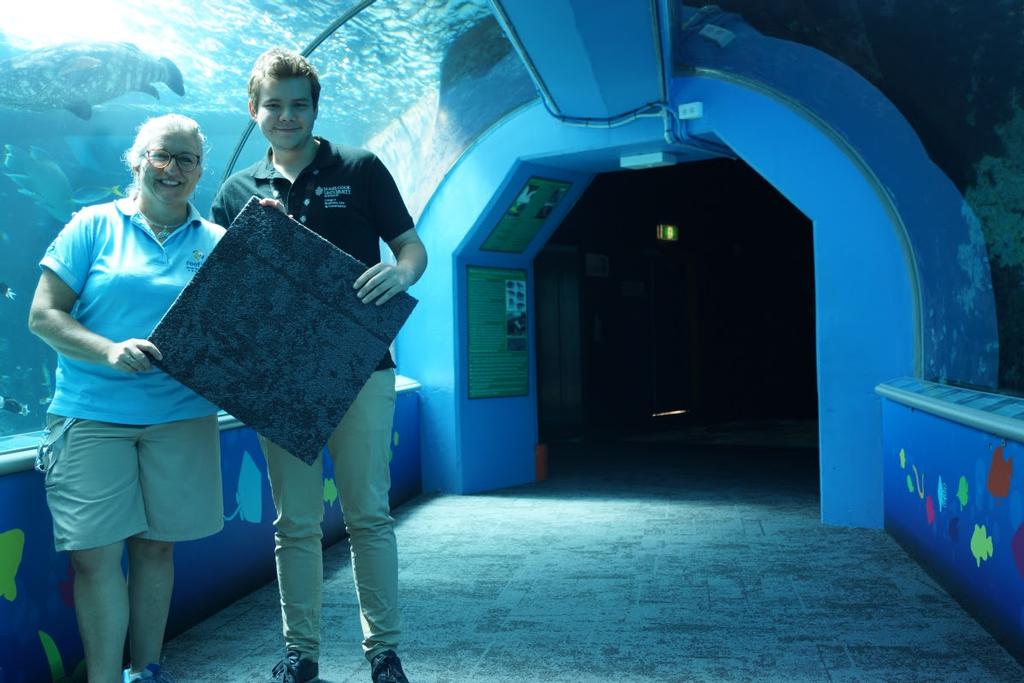Ghost nets get a new lease on life on floors of Reef HQ
by GBRMPA Media on 10 Aug 2017

Ghost nets recycled in Reef HQ Great Barrier Reef Marine Park Authority
http://www.gbrmpa.gov.au/
When you next visit Townsville’s Reef HQ Great Barrier Reef Aquarium, remember to look down at your feet — you’ll be walking on the ocean.
The new carpet at the national education centre for the Great Barrier Reef is made of 100 per cent recycled plastic, including discarded fishing nets pulled from the oceans around the Philippines and Cameroon.
Lost and discarded nylon fishing nets, known as “ghost” nets, are a huge problem globally, estimated at roughly 10 percent of the millions of tons of plastic trash in the world’s oceans.
Fishing nets are crucial to the fishing economy of the region, but those that tear away or are abandoned in the sea can become deadly for marine life and have a big indirect impact on the coral-based ecosystems marine life depend on.
Tons of ghost nets are pulled from the ocean every year by fishermen in the Philippines and Cameroon, who created a new industry out of the process, with the nets being recycled into environmentally friendly materials such as carpet tiles by company Interface.
But in a nice twist, instead of choking and trapping sea creatures such as turtles, dugongs and crabs, this marine rubbish is going full circle by being recycled for use in an organisation dedicated to protecting that very same marine life.
Reef HQ Aquariuam technical operations manager Sascha Thyer said the decision to opt for the environmentally accredited carpeting aligned with the Great Barrier Reef Marine Park Authority’s focus on sustainability.
“More than 1200 square metres of the dark carpet — the colour appropriately called Black Sea — has been laid at Reef HQ over the past six months and the job was recently completed,” she said.
“Cost-wise it was a very viable option, and met our aim of sustainability and connecting to the environment.
“What impressed me was the company’s dedication to the full life cycle of the product, from how the manufacturing process impacts on the environment through to this recycled carpet being able to be fully recycled again.
“Even the way the carpet is laid is environmentally-friendly — they don’t use glue, but adhesive patches based on bio-mimicry, which works just like gecko feet in adhering the carpet to the floor.’’
Reef HQ curator Steve Menzies said ghost nets were also found in Australian waters and washed up on beaches, particularly in the Gulf country.
“There’s evidence of hundreds of animals, including turtles, that have died as a result of entanglement in these ghost nets,’’ Mr Menzies said.
“The location and size of these nets mean it is logistically very difficult to take them out of the environment, and their legacy can last for decades, continuing to kill already threatened wildlife.
“Ghost nets are removed by Indigenous communities in north Queensland when they are found at sea, or on the beach, but there is certainly a large proportion of nets that are under water and can’t be detected or removed.’’
If you want to link to this article then please use this URL: www.sailworldcruising.com/156319